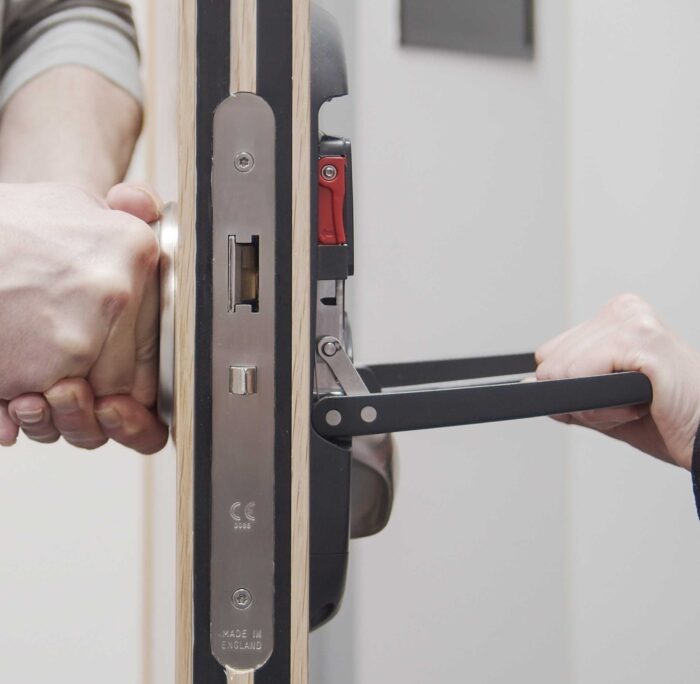Speaking regularly with clinical staff, I get the opportunity to listen to their experiences in mental health settings and gain an understanding of what they need from the built environment to support them in providing clinical care.
With 90% of inpatient suicides occurring in the bedroom or bathroom, anti-barricade functionality is often high on the agenda. But through these conversations, I’ve come to realise that clinicians aren’t just looking for an anti-barricade stop. They’re looking for the ability to gain easy, reliable access in an emergency, allowing them to focus on patient care.

Electronic lockset – reliable lock override with pull advantage
Addressing the risk alert
We recently learned of a high-level risk alert circulating between clinical and nursing directors in a mental health forum. The alert was issued following an incident where a leather belt was wedged between the door and the frame, causing a 3rd party anti-barricade door system to fail. This incident tragically resulted in a patient taking their own life.
From what we understand, staff weren’t able to gain access because they had no pull advantage from outside the bedroom.
Whenever an alert like this is issued, we always reassess our own rigorous test methods to ensure our products will help clinical staff gain access when they need it most, no matter what tampering has occurred.
Key considerations for emergency access
Clinical feedback is vitally important for us. It guides everything we do. Clinicians told us that the critical function is getting access to the room, not just overriding the lock or the anti-barricade stop.
So when it comes to considering solutions or assessing your current door system, there are three key functions that we’d strongly encourage you to consider. Can you:
Reliably override the lock – even with tampering?
Reliably release the anti-barricade stop – even under pressure?
Reliably pull the door open – even when wedged?
These three points are also highlighted in the independent Testing Guidance for Products in Mental Health Facilities recently published by BRE.
Overcoming determined barricades
We used these three key steps to guide the design of our new Electronic Lockset LINK. This electronic lock provides patient independence, backed up by built-in emergency staff access in just 5 seconds.
We simulated the incident in our Glasgow test lab – wedging a belt between the door and door frame. Using the Electronic Lockset, we were able to overcome resistance and gain access. If you’d like to see the testing we carried out, you can request access to view to the video LINK TO FORM.
LINK TO WATCH WEBINAR REQUEST FORM
